Specifying Mandatory Configuration Settings
After running the installer, as described in Running the Workflow Manager Installer, the AdminStudio Configuration Wizard automatically opens. You will be prompted to enter the information described in Gathering Required Information, and you will be prompted to upload your license file.
Note:You are required to specify these mandatory settings immediately after installation. You can also update these settings at any time by launching the AdminStudio Configuration Wizard manually and selecting Create/update AdminStudio database and/or Activate AdminStudio license on the Welcome panel of the wizard. To manually launch the AdminStudio Configuration Wizard, open the following file:
C:\AdminStudioWebComponents_v20\Support\Config\Config.exe
To specify settings in the AdminStudio Configuration Wizard:
| 1. | When installation is complete, the AdminStudio Configuration Utility will automatically launch. The Create or Update an AdminStudio database panel opens. |
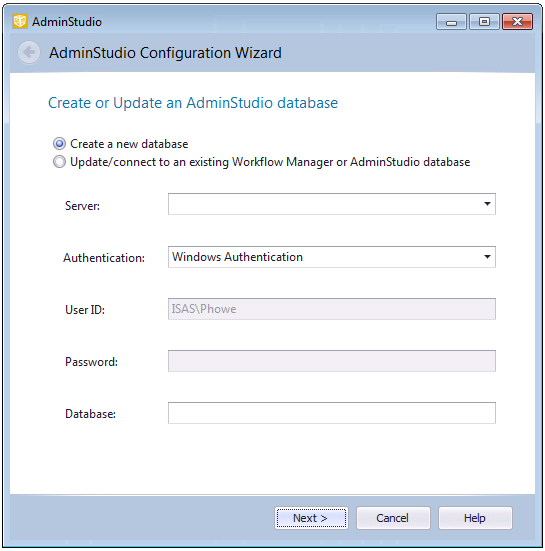
| 2. | On the Create or Update an AdminStudio Database panel, you are prompted to enter the database server and database name of the database where you will be storing your Workflow Manager data, and login the credentials to that database. Enter the following information: |
|
Property |
Description |
||||||
|
Option |
Select one of the following options:
Note:To connect an existing catalog by Windows Authentication which was created using Server Authentication, see Configuring Windows Authentication in Internet Information Services |
||||||
|
Server |
Either select a server from the list of available SQL Servers on the network, or manually enter the name of the SQL Server to which you want to connect. |
||||||
|
Authentication |
Select one of the following options:
Note:Workflow Manager / App Portal integration only—If you plan to integrate Workflow Manager with App Portal, you must use Windows Authentication. Also, anonymous and forms authentication needs to be turned off for the site in IIS. |
||||||
|
Database |
If creating a new database, enter its name. If connecting to an existing database, enter its name or select the database name from the list. |
| 3. | Click Next. The Set Default Connection panel opens, prompting you to enter the default connection information for web site users. |
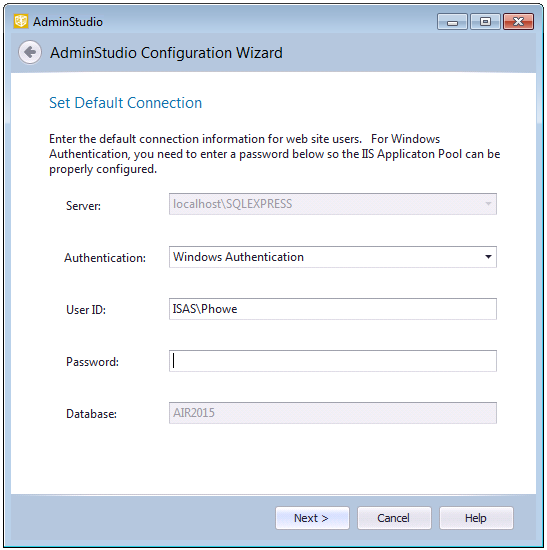
Important:To connect to a catalog created using server authentication and now using Windows Authentication, see Configuring Windows Authentication in Internet Information Services
| 4. | Do one of the following based upon the Authentication selection you made on the previous panel: |
| • | Windows Authentication—Enter the User ID and Password that the Web Sites Application Pool will run as in order to access the database. |
| • | SQL Server Authentication—Confirm that the User ID and Password that you entered in the previous panel are displayed here. |
| 5. | Click Next. The Configuration Settings: Administrative panel opens. |
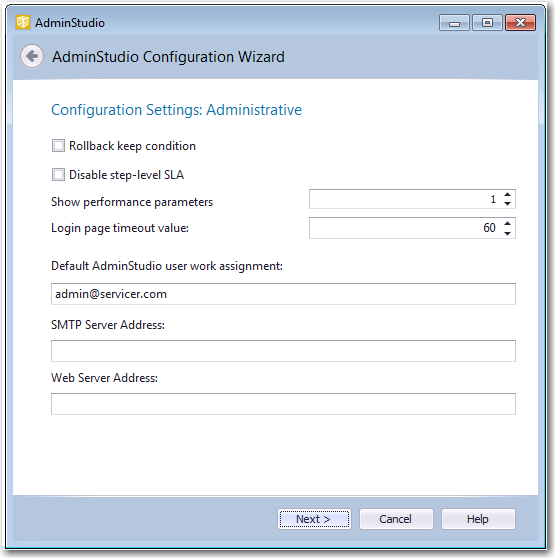
| 6. | Specify the following settings: |
|
Property |
Description |
|
Rollback keep condition |
Not currently used. |
|
If this option is selected, the Track for Workflow SLA option on the Template Details view is not available. That means that all workflow steps will be included in SLA calculations. |
|
|
Show performance parameters |
Not currently used. |
|
Identifies the length of time that you can leave the login page open before it times out. |
|
|
Specify which AdminStudio user is automatically assigned to an AdminStudio project that is created as part of a Workflow Manager phase. |
|
|
SMTP Server Address |
Enter the address of your email server. |
|
Web Server Address |
Edit to modify the Workflow Manager website IP address. By default, it is http://localhost/. |
| 7. | Click Next. The Configuration Settings: Network Share panel opens. |
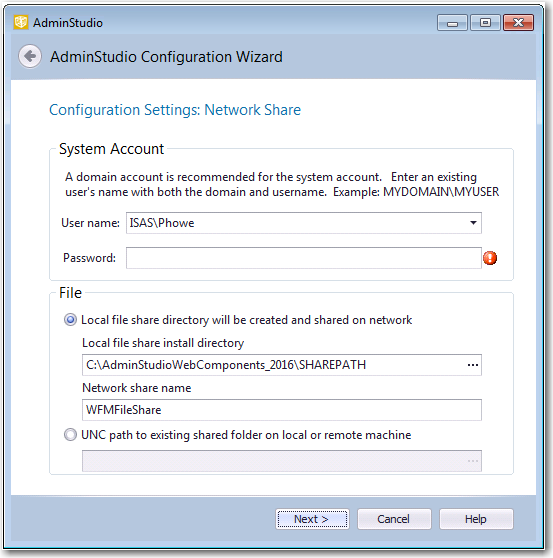
| 8. | Enter the following information: |
|
Property |
Description |
|
User name Password |
Enter a user name and password for the system account. Enter the user name in DOMAIN_NAME\USER_NAME format. |
|
Local file share directory will be created and shared on network |
Select this option if your file share location is on the local machine. |
|
Local file share install directory |
Enter the local file share directory path. |
|
Network share name |
Specify the name of the shared directory when it is viewed from other machines in the network. |
|
UNC path to existing shared folder on local or remote machine |
Select this option if your file share location is in a shared folder on a local or remote machine, and enter the location in UNC path format. |
| 9. | Click Next. The Activation panel opens. |
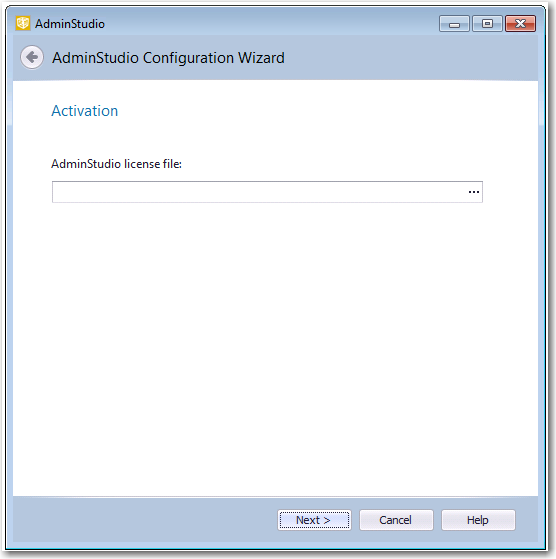
| 10. | Click the browse button and upload your license file, and then click Next. The configuration begins and messages are displayed. |
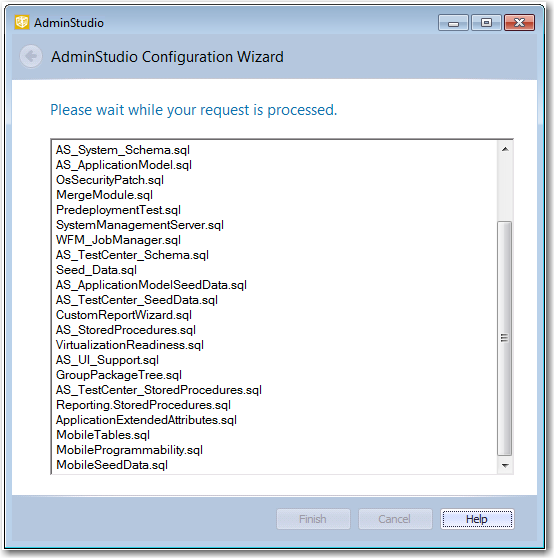
| 11. | When the configuration steps are complete, click Finish to close the wizard. |